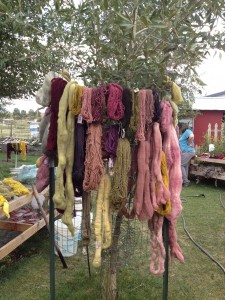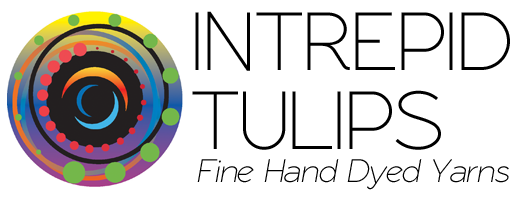Last weekend I traveled to the old mining town of Encampment, Wyoming with a bunch of friends for a dyeing workshop with Carol Lee at Sheep Shed Studio. Carol has been working with fiber and natural dye for years, and packs an enormous amount of information into a delightful weekend. Natural dyeing has a different process from chemical dyeing, and requires “mordanting” the fiber or yarn in a heated stew with a mordant before the actual dyeing takes place in a separate, later stew with color. The mordant chemicals are traditionally alum, tin, chrome, copper, and iron, and serve to bind the color from natural dyestuff to the yarn or fiber. Interestingly, they also have a heavy handed way of influencing the resulting color.
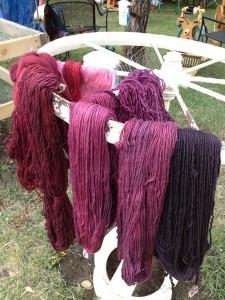
All the yarn skeins in this photo spent the same amount of time together in the cochineal pot – the only different between the skeins is the mordant pot that they’d been in previously. The deep purple skein was mordanted in iron, the red hot skein in tin. Chrome and alum mordants produced the two intermediate shades. Below are a couple pics of the (steamy and smokey) cochineal pot itself.
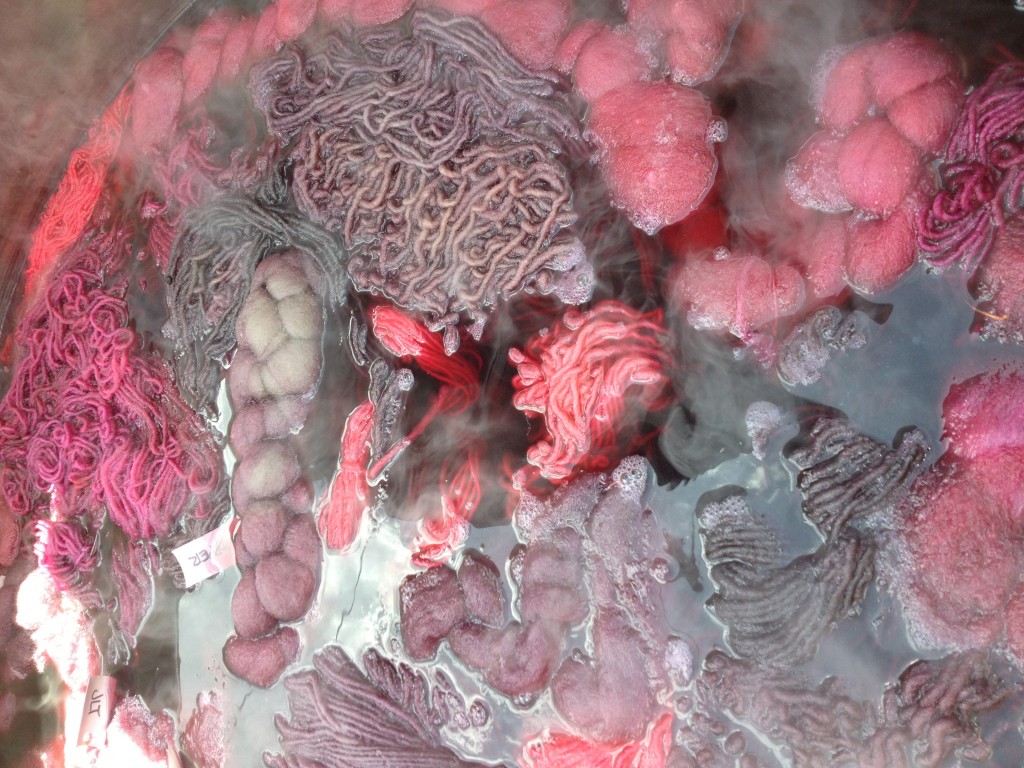
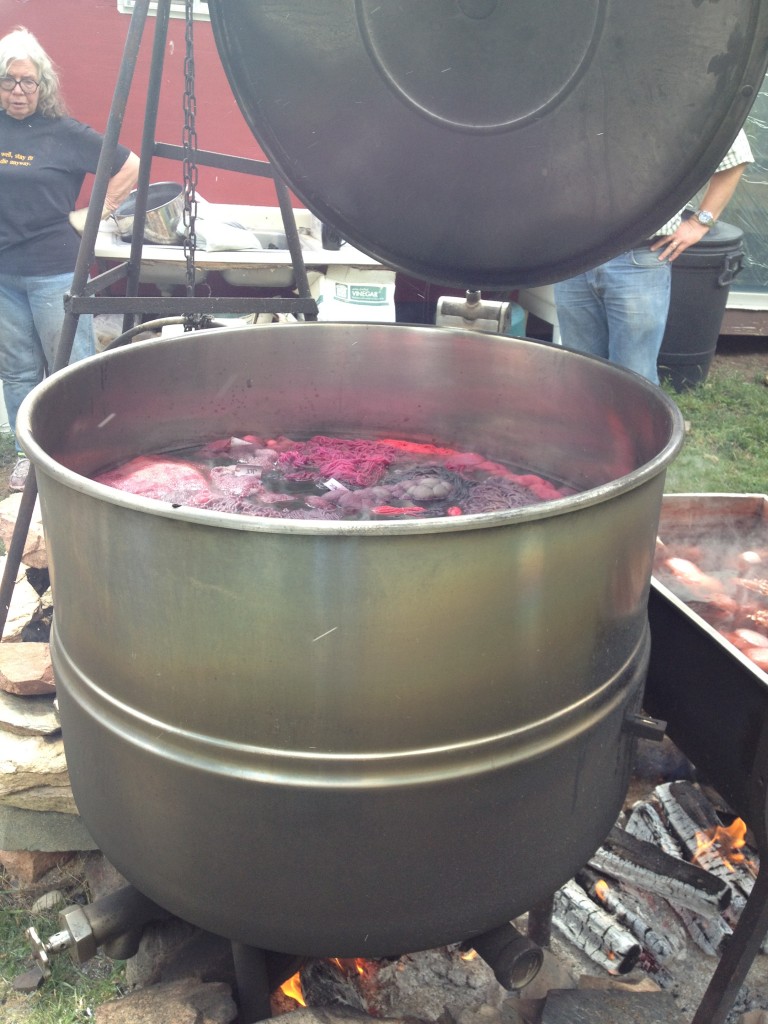
Yes, it’s the biggest pot I’ve ever seen. The people in the background are closer than they appear.
Because of the mordant step, a natural dyefest takes on a different dimension than a chemical dyefest. For example, on the first evening in Encampment, we sorted and labeled our yarns and spinning fiber into piles for the different mordant pots. All this was mordanted, rinsed, and hung to dry. The next morning, we resorted our skeins for different dyepots: cochineal, sage, rabbit brush, brazilwood, osage orange, and a p.h. modified brazilwood designed to soften the perky purples into more reticent roses.
More labeling ensued. Honestly, the decision making among the field of combination options bordered on overwhelming.
Here’s the pot of sage, which smelled lovely, I might add.
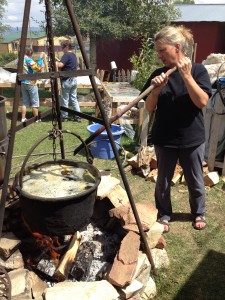
After several rounds of this sorting – labeling – dipping cycle, you can imagine just how color-drunk and fiber-happy we all were. Here’s a little of the yard art that resulted from efforts to dry our yarn between the afternoon cloudbursts.
